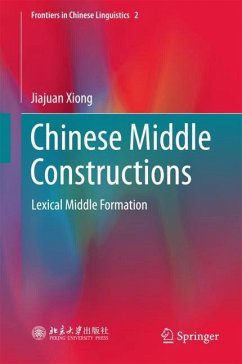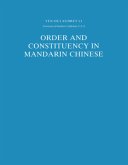This book defines Chinese middle constructions as generic constructions, with their highest syntactically saturated argument always understood as an arbitrary one. This working definition sets "middle construction" apart from "middle voice" in that it can be instantiated by various constructions in Chinese. By scrutinizing these constructions in the framework of Generative Syntax, the book concludes that their formation takes place at the lexical level, without resorting to any syntactic mechanisms and thus that Chinese falls into the category of "lexical middle languages", which are in contrast to "syntactic middle languages".
Bitte wählen Sie Ihr Anliegen aus.
Rechnungen
Retourenschein anfordern
Bestellstatus
Storno








